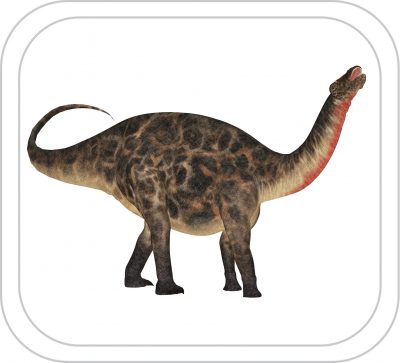Dicraeosaurus
Name: Dicraeosaurus
Pronounced: die-KRAY-oh-SORE-us
Meaning: ’Forked lizard’ due to the forked spines in its backbone.
Period: Late Jurassic (150 – 135 million years ago)
Group: Sauropods (lizard feet)
Size: There is contradictory information on the height and length of this dinosaur. It weighed approximately 10,000kg
Diet: Herbivore
Characteristics: The Dicraeosaurus walked on four legs and had a very large head with a short, wide neck. The neck contained twelve extraordinarily short vertebrae, each shaped like a ‘Y’ type fork. These forked vertebrae were muscle attachment points. The short vertebrae meant the Dicraeosaurus was not as tall as other sauropods and its tail was also much shorter. Many palaeontologists thought sauropods like the Dicraeosaurus, Brachiosaurus and Diplodocus had a second brain. However, further research has shown what they first believed to be a second brain, was an enlargement in the spinal cord in the hip area. This enlargement was actually larger than the dinosaur’s tiny brain.
Named by: Werner Janensch in 1914
Discovery: Partial Fossils have been discovered in the rocks of Tendaguru Hill in Tanzania, East Africa.

